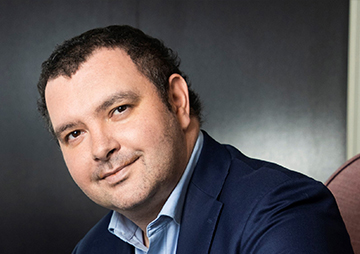- Home
- Studies and research
- Study : From healthcare real estate to the well-being society
From healthcare real estate to the well-being society:
Enabling people to live in good health, and promoting well-being at all ages, are essential conditions for improving the quality of life.

While healthcare real estate needs to be considered on a European scale to achieve a relevant investment strategy, the sector benefits from solid and encouraging fundamentals resulting from continued demographic pressure and the rapid ageing of the population. Investing in health infrastructure also means offering the possibility to all to enjoy better health and promote well-being, which are essential elements for improving the quality of life in our societies.

Enabling people to live in good health, and promoting well-being at all ages, are essential conditions for improving the quality of life.
Prior to the pandemic, major progress had been made to improve the health of millions of people. Significant advances have increased life expectancy and reduced the impact of certain major causes of death.
But new efforts are now needed, to address health issues old and new and to ensure continuous improvements in the population’s health and well-being.
Improvements in health and well-being will come in part through an expansion of real estate infrastructure:
- retirement homes and assisted-living senior housing
- nursing homes
- hospitals/clinics
- psychiatric institutions/well-being centresli>

This expansion of European healthcare infrastructure creates numerous challenges which have been clearly identified:
- institutions will have to invest massively to offer suitable solutions;
- as public supply is limited, governments will need to turn to private investors in healthcare real estate across Europe, to meet future demand for new buildings and for the renovation of some ageing, even obsolete, facilities.
These significant healthcare real estate infrastructure needs are driven over the long term by demographic factors:
- the general growth of the population, which will put pressure on healthcare systems;
- the rapid ageing of the population, which will result in people living longer in better health, but will also leave senior citizens facing the development of the conditions that come with advanced old age.

Healthcare real estate constitutes a responsible investment as it contributes to a model of society which has at its heart the good health and well-being of individuals, healthy living, or the fact of promoting well-being for all. Prevention is a financial as well as a medical necessity. Funding preventative measures (tackling obesity, screening for cancer, etc.) generates savings that will allow healthcare systems to remain viable.
The general shift towards upstream prevention rather than downstream medical intervention is a fundamental trend. The main global causes of avoidable disease are smoking, dietary imbalances and excess alcohol consumption. Some studies have also identified pollution as a factor in shortening life expectancy. There is a consensus that the costs of prevention are less than the costs of medical treatment if the groups affected are sufficiently large1. As a result it is likely that public policy will increasingly incorporate this approach, as it becomes more culturally acceptable. One example is the phased tobacco ban in New Zealand from 2023.
The continuing demographic pressure and rapid ageing of the population are creating needs that make investment in healthcare infrastructure an absolute necessity. There is a real need for the renovation of existing facilities and for additional beds in healthcare establishments and nursing homes in order to cope with future demand, and this need represents investment in the tens of billions of euros.
Understanding the drivers of the demographic and real estate trends affecting healthcare infrastructure is therefore essential for building a Europe-wide longterm investment policy.
1Cohen JT, Neumann PJ, Weinstein MC (February 2008). «Does preventive care save money? Health economics and the presidential candidates». The New England Journal of Medicine
The team

With a university education in local economic development, Daniel While began his career as business establishment consultant to local authorities. In 2006, he joined the Institut de l’Epargne immobilière et Foncière as analyst, and specialised in the world of unlisted real estate funds (SCPIs and OPCIs for France).
He is co-author of the book Les OPCI published by Delmas (September 2008). He joined Primonial REIM in 2017, where he held the position of Development Director, then Research & Strategy Director from 2019.

Henry-Aurélien Natter joined Primonial REIM as Research Manager in January 2018. He has the mission of developing the analyses of the Research & Strategy Department on the real estate markets, the economy and capital in France and in Europe.
Henry-Aurélien Natter began his career at Les Echos Etudes (formerly Eurostaf), then at C&W (formerly DTZ), and lastly at BNP PRE, where he acquired solid and varied experience in real estate research, strategy and finance. He is qualified with an AES degree in Business Management, a Masters Decree in management and SME management, and an International Master in commerce and marketing.


 et Firefox
et Firefox 